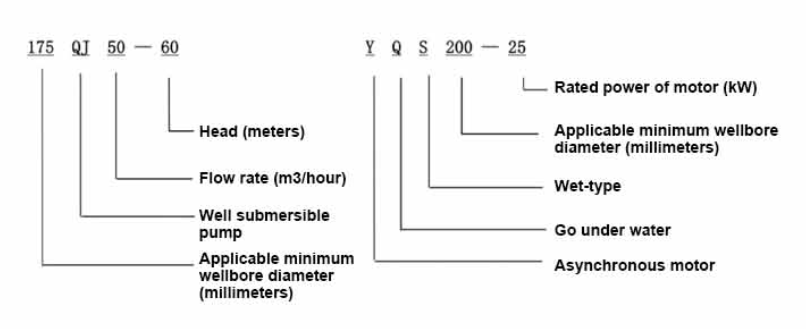Jul . 27, 2024 11:24 Back to list
Factors Influencing the Cost of Submersible Pumps in Various Applications and Industries
Understanding the Cost of Submersible Pumps An In-Depth Analysis
Submersible pumps are an essential component in numerous applications, ranging from residential to industrial and agricultural uses. These pumps are designed to function underwater, making them ideal for moving water from wells, sewage systems, and various other environments. However, understanding the cost associated with these pumps is crucial for making informed purchasing decisions and ensuring effective budget management.
Key Factors Influencing Cost
1. Type of Pump The cost of submersible pumps can vary significantly depending on their type and intended application. For instance, a simple residential well pump is typically less expensive than a heavy-duty industrial pump designed for high-capacity wastewater removal. Electric submersible pumps (ESPs) used in oil extraction are among the most expensive due to their specialized construction and materials.
2. Material Quality The materials used in manufacturing the pumps play a significant role in determining the cost. Pumps made from corrosion-resistant materials like stainless steel or specific polymers can be more expensive upfront but offer better durability and longevity, ultimately resulting in lower lifetime costs.
3. Pump Capacity and Power Rating The size and power rating of the pump are also critical cost factors. Higher capacity pumps designed to move larger volumes of liquid will typically come with a higher price tag. Additionally, more powerful motors, which are necessary for deep well applications or high-pressure requirements, add to the overall cost.
4. Brand Reputation Like with many products, brand reputation can influence cost. Established manufacturers known for their reliability and superior performance may charge more for their pumps, but they often provide better warranties and customer service.
5. Installation and Maintenance The cost of the pump itself is not the only expense to consider. Installation costs can vary based on location, complexity, and whether additional equipment is needed. Regular maintenance is also essential to keep submersible pumps functioning effectively, and budgets should factor in potential maintenance and repair costs over the pump's lifecycle.
cost of submersible pump

Comparing Costs
When assessing the cost of submersible pumps, it is vital to compare different models and manufacturers systematically
. This comparison should include analyzing specifications, warranty offerings, and customer reviews. While it might be tempting to opt for the cheapest option, it is essential to consider the long-term implications of such a choice. Investing in a reliable and efficient pump may involve a higher initial expenditure but can yield significant savings through reduced repair costs and energy efficiency.Additional Considerations
Additionally, understanding the total cost of ownership is crucial. This includes potential savings from energy-efficient models, which can reduce electricity costs over time. Some modern submersible pumps are designed to operate more efficiently, resulting in lower operational costs.
Moreover, regional considerations such as the availability of skilled installation services and local regulations can impact overall costs. Areas with strict environmental regulations may require more expensive pumps or additional filtration systems.
Conclusion
In conclusion, the cost of submersible pumps is influenced by a myriad of factors including type, material, capacity, brand, and installation needs. When choosing a submersible pump, it's essential to look beyond the initial purchase price and consider the long-term value and reliability of the investment. By conducting thorough research and analysis, consumers can make informed decisions that meet their specific needs while remaining budget-conscious. Ultimately, a well-chosen submersible pump can provide years of reliable service, easing water management challenges in a variety of settings.
-
Submersible Water Pump: The Efficient 'Power Pioneer' of the Underwater World
NewsJul.01,2025
-
Submersible Pond Pump: The Hidden Guardian of Water Landscape Ecology
NewsJul.01,2025
-
Stainless Well Pump: A Reliable and Durable Pumping Main Force
NewsJul.01,2025
-
Stainless Steel Submersible Pump: An Efficient and Versatile Tool for Underwater Operations
NewsJul.01,2025
-
Deep Well Submersible Pump: An Efficient 'Sucker' of Groundwater Sources
NewsJul.01,2025
-
Deep Water Well Pump: An Efficient 'Sucker' of Groundwater Sources
NewsJul.01,2025
-
 Submersible Water Pump: The Efficient 'Power Pioneer' of the Underwater WorldIn the field of hydraulic equipment, the Submersible Water Pump has become the core equipment for underwater operations and water resource transportation due to its unique design and excellent performance.Detail
Submersible Water Pump: The Efficient 'Power Pioneer' of the Underwater WorldIn the field of hydraulic equipment, the Submersible Water Pump has become the core equipment for underwater operations and water resource transportation due to its unique design and excellent performance.Detail -
 Submersible Pond Pump: The Hidden Guardian of Water Landscape EcologyIn courtyard landscapes, ecological ponds, and even small-scale water conservancy projects, there is a silent yet indispensable equipment - the Submersible Pond Pump.Detail
Submersible Pond Pump: The Hidden Guardian of Water Landscape EcologyIn courtyard landscapes, ecological ponds, and even small-scale water conservancy projects, there is a silent yet indispensable equipment - the Submersible Pond Pump.Detail -
 Stainless Well Pump: A Reliable and Durable Pumping Main ForceIn the field of water resource transportation, Stainless Well Pump has become the core equipment for various pumping scenarios with its excellent performance and reliable quality.Detail
Stainless Well Pump: A Reliable and Durable Pumping Main ForceIn the field of water resource transportation, Stainless Well Pump has become the core equipment for various pumping scenarios with its excellent performance and reliable quality.Detail
